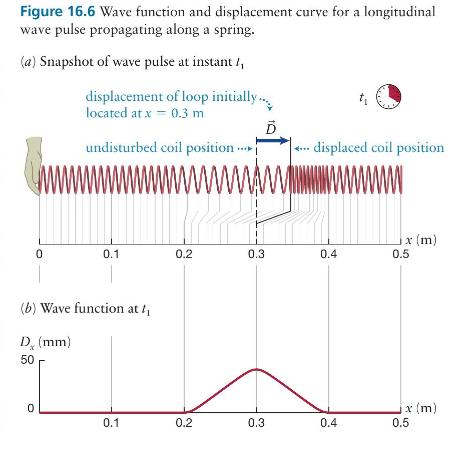(a) The pulse in Figure (16.6 b) is symmetrical even though Figure 16.6a shows that the length...
Question:
(a) The pulse in Figure \(16.6 b\) is symmetrical even though Figure 16.6a shows that the length of the stretched portion of the spring is \(0.15 \mathrm{~m}\) and the length of the compressed portion of the spring is only \(0.05 \mathrm{~m}\). Explain how the symmetrical curve of Figure \(16.6 b\) is a correct representation of the asymmetrical situation shown in Figure 16.6a.
(b) Suppose that instead of the end of the spring moving to the right, as illustrated in Figure 16.6, the end is moved to the left. Would this disturbance still cause a wave pulse to travel to the right? If yes, sketch the wave function for this wave pulse at some instant \(t>0\). If no, what happens instead?


Fantastic news! We've Found the answer you've been seeking!
Step by Step Answer:
Related Book For 

Question Posted:





